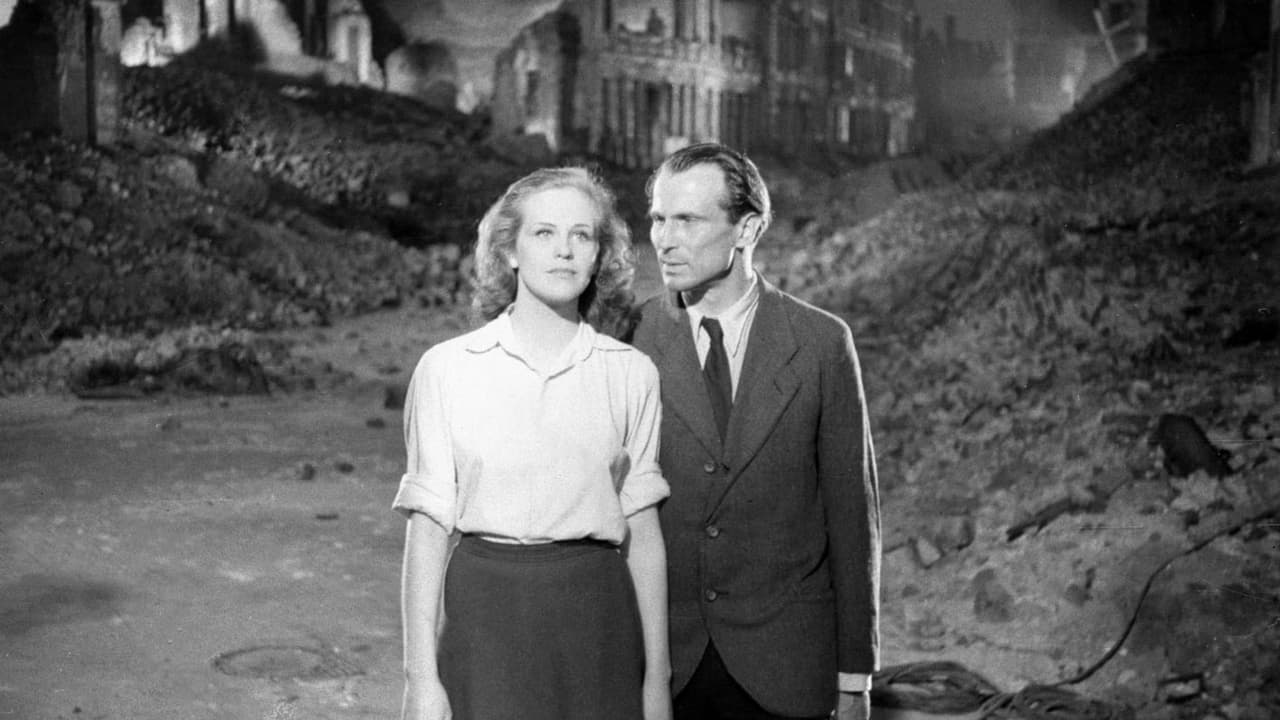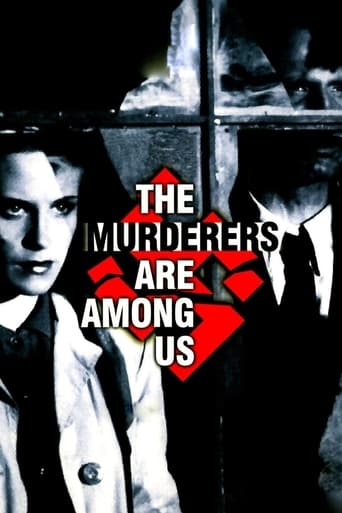

Overrated
... View MoreOne of the best films i have seen
... View MoreBetter Late Then Never
... View MoreEach character in this movie — down to the smallest one — is an individual rather than a type, prone to spontaneous changes of mood and sometimes amusing outbursts of pettiness or ill humor.
... View MoreThis film is certainly worthwhile for a serious student of movie history, given its circumstances. The first film released in post WW-II Germany, etc...Yes, the plot line development is predictable from the midpoint of the film onwards. And sure, there are the side-stories regarding post-war German guilt and apologia and its role in the making of this film. I'll give you all of that.But the reason a movie lover wants to watch this film is two-fold. One, the stark B/W cinematography of this film is deeply affecting and very unique for the time period. And two, the wonderful, sublime beauty of a young Hildegard Knef. She is so fragile in this film, it's a real contrast with her later persona of the German song chantreuse of the 60s.It's hard to find this movie on DVD, but it's out there. If you find it to buy or rent, give it a watch, well worth the time. 8/10 rating.
... View MoreMURDERERS Among US is the first film that was made in Germany after the end or WW 2.It was made in Berlin amidst all the rubble. The Interior sets look like the actual half ruined apartments. It is in Black & White & exceptionally realistic. It proves one more time,how actually Black & White cinematography can be.The directer was noted German director Wolfgang Staudte.He & his father Fritz wrote the screenplay. We do not know the meaning of the title until near the end of this 81 minute film. This part is well done but grim.Hildegard Knef & Ernst Wilhelm Borchert are excellent in the two leading roles, Ms.Knef did make a few American & English movies. To be kind, she had a better career in European films than she had in English speaking roles,Only reason I cant give this a higher rating is that Ms.Knef looks too healthy to have spent the last 3 years in a concentration camp.Non-the-less this is still a very worthwhile film & should be seen, one reason being the plot is somewhat similar to the current movie' THE READER.Ratings: ***1/2 (out of 4) 95 points (out of 100) 9 (out of 10)
... View More"Report for December 24, 1942. Execution. 36 men, 54 women, 31 children, 347 rounds of ammunition" It's now Berlin, a year after Germany surrendered. The city is little more than destroyed buildings and mountains of uncleared rubble. Susanne Wallner (Hildegarde Knef) has made her way to a crumbing apartment building where she lived before being sent to a concentration camp in 1943. She finds her apartment is now occupied by a man called Hans Mertens (Ernst Wilhelm Borchert). He's withdrawn, depressed, sardonic, and he refuses to leave. She finally says that she is moving in but that he can stay a few days until he finds other quarters. Mertens, it turns out, is a doctor who has lost all desire to do anything but drink. He had been a surgeon assigned to the Germany army in Poland. As he and Susanne tentatively develop feelings for each other, two things happen. He discovers the man who had been the captain of his unit in 1942 is now in Berlin, a happy and confident factory owner, father of two, and untroubled by any war experiences. Ferdinand Brueckner (Arno Paulsen) is a brisk little man with thinning hair, rimless glasses and a small mustache. He tells Mertens, "Every era offers its chances if you find them. Helmets from sauce pans or sauce pans from helmets. It's the same game." Mertens plans to shoot him. Mertens also is called to help a young girl who is slowly suffocating. He reluctantly identifies himself as a doctor. He does not want to do anything, but knows the girl will die if he doesn't take emergency steps. He winds up realizing a new self-worth in his skills as a doctor. He and Susanne begin a much happier time together. Then Christmas Eve brings back all the memories of an atrocity he tried and failed to stop, and of the captain who gave the order to shoot dozens of hostages while he prepared a Christmas Eve celebration for his officers in a village in Poland. Mertens is determined this time to see that justice is done, and so be it if that means he must be a murderer, too. He finds Brueckner in Brueckner's darkened factory. The conclusion is tense but not without hope. This sounds almost melodramatic. The Murderers Are Among Us, however, is anything but. The film was the first movie made in Germany after WWII. It's a sad, thoughtful reflection on the crimes Germany committed and on the need for some kind of accountability. Weaving through the sadness of Mertens, however, is the recognition of how important hope is. The movie, itself, is so well photographed and edited that it remains a gripping piece of work. The film was shot in Berlin and all the bombed-out buildings, the rubble and the sight of Berliners struggling to live is real. Director Wolfgang Staudte brings an effective mixture of expressionism and documentary realism to the film. He creates some wonderful scenes of angled stairways, broken windows, low, upward shots and harsh shadows. And a word about Hildegarde Knef. She has always been one of my favorite actresses. She was an attractive woman but no Hollywood starlet type. She had a long face, a strong mouth, intelligent eyes with a mind you could see working. When she came to La La Land and Hollywood couldn't figure out what to do with her, she shrugged and immediately headed back to Europe, where she became an international star. She had a great success later on Broadway as Ninotchka in Cole Porter's Silk Stockings. She's one of the best reasons for watching The Lost Continent. (Eric Porter is the other.)
... View MoreAn early film with the late Hildegard Knef, Die Mörder sind unter uns is an ambitious war drama, far too pathetic in its tormenting sadness and melancholic agony but interesting though because it is obviously the first WWII drama from Germany at all. It shows pictures from destroyed Berlin without having to construct a setting as modern films do. It deals with the problem of responsibility in war situations just as other movies do, not as eloquently but honestly and simply earlier.
... View More